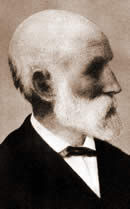Marcos Sastre facts for kids
Quick facts for kids
Marcos Sastre
|
|
|---|---|

Portrait of Marcos Sastre.
|
|
| Born | October 2, 1808 Montevideo, Uruguay |
| Died | February 15, 1887 (aged 78) Buenos Aires, Argentina |
| Occupation | Writer |
| Language | Spanish |
| Citizenship | Argentina |
Marcos Sastre was an important Argentine writer and educator. He was born in Montevideo, Uruguay, on October 2, 1808. He later moved to Argentina and became a well-known figure in the country's cultural scene.
Sastre is famous for helping to start the Salón Literario, a special meeting place for young thinkers. This group became known as the "Generation of '37." He passed away in Buenos Aires, Argentina, on February 15, 1887.
Contents
Early Life and Education
Marcos Sastre began school in Montevideo. His family moved to Santa Fe, Argentina, when he was young. He finished high school at the Monserrat School in Córdoba. There, he also started learning about art and painting.
After a war, he went back to Montevideo. He opened a school and published a book to help people learn to read. In 1830, he moved to Buenos Aires. He started studying law at the University of Buenos Aires, but he did not finish his degree. He also continued to study painting with famous artists.
The Literary Salon
In 1831, Marcos Sastre opened a bookstore called "Librería Argentina." In the back room of his shop, a new literary club began meeting in 1835. This club was called the Salón Literario, which means "Literary Meeting Room."
The young people who regularly met at the Salón were interested in culture, politics, and new scientific ideas. Important members included Juan Bautista Alberdi, Juan María Gutiérrez, and Esteban Echeverría. At first, they talked about literature, art, and fashion. They were inspired by the romanticism movement popular in Europe.
Soon, their discussions also included politics and culture. These topics became the main focus of their meetings.
Challenges and Changes
In 1837, Esteban Echeverría founded the Asociación de Mayo in the back room of Sastre's store. At first, some government officials liked the meetings. However, the group soon became suspicious to the government's political arm, the Sociedad Popular Restauradora.
Around the same time, France started a blockade of the Río de la Plata. This event, along with the group's political discussions, made them seem against the government of Juan Manuel de Rosas. Many of Sastre's friends fled to Montevideo because of threats from a group called the Mazorca. Sastre, however, stayed in Buenos Aires.
The government's disapproval and the stop of imports from France caused Sastre's bookstore to go out of business. In 1840, Sastre published a novel called Cartas a Germania.
A Naturalist's Work
After his shop closed, Sastre moved to the nearby town of San Fernando. In 1842, he opened a school there. During this time, he wrote his most important work as a self-taught naturalist, called El Tempe Argentino.
This book was a literary study of the plants, animals, and geography of the Paraná Delta. Sastre even drew the pictures for the book himself. Besides observing plants and animals, he also studied insects, mushrooms, and ferns in the region. This was quite new and exciting for the time.
Later Career and Legacy
After another visit from the Mazorca, Sastre left San Fernando. He moved to Santa Fe and later to Entre Ríos. In 1849, he started a newspaper called El Sudamericano. The next year, Governor Justo José de Urquiza made him the Inspector General of schools. Sastre also became the director of the official newspaper, El Federal.
After the Battle of Caseros, which removed Rosas from power, Sastre returned to Buenos Aires. He was named director of the public library. However, because he supported Urquiza's government, he lost this job in 1853.
He went back to Entre Ríos and became the Inspector General of schools for the Argentine Confederation. He also wrote for several newspapers. He published a book on spelling, Ortografía Completa, and another on grammar, Lecciones de Gramática.
After the Battle of Pavón, Sastre continued to work as the director of schools for the country. In 1865, he became the director of the Teacher's School in Entre Ríos. His last public job was as a member of the national Council on Education. He worked there until he passed away in 1887.
The town of Sastre in Santa Fe Province is named after him. Many streets in Argentine cities and a school in Tigre are also named in his honor.
See also
 In Spanish: Marcos Sastre para niños
In Spanish: Marcos Sastre para niños

